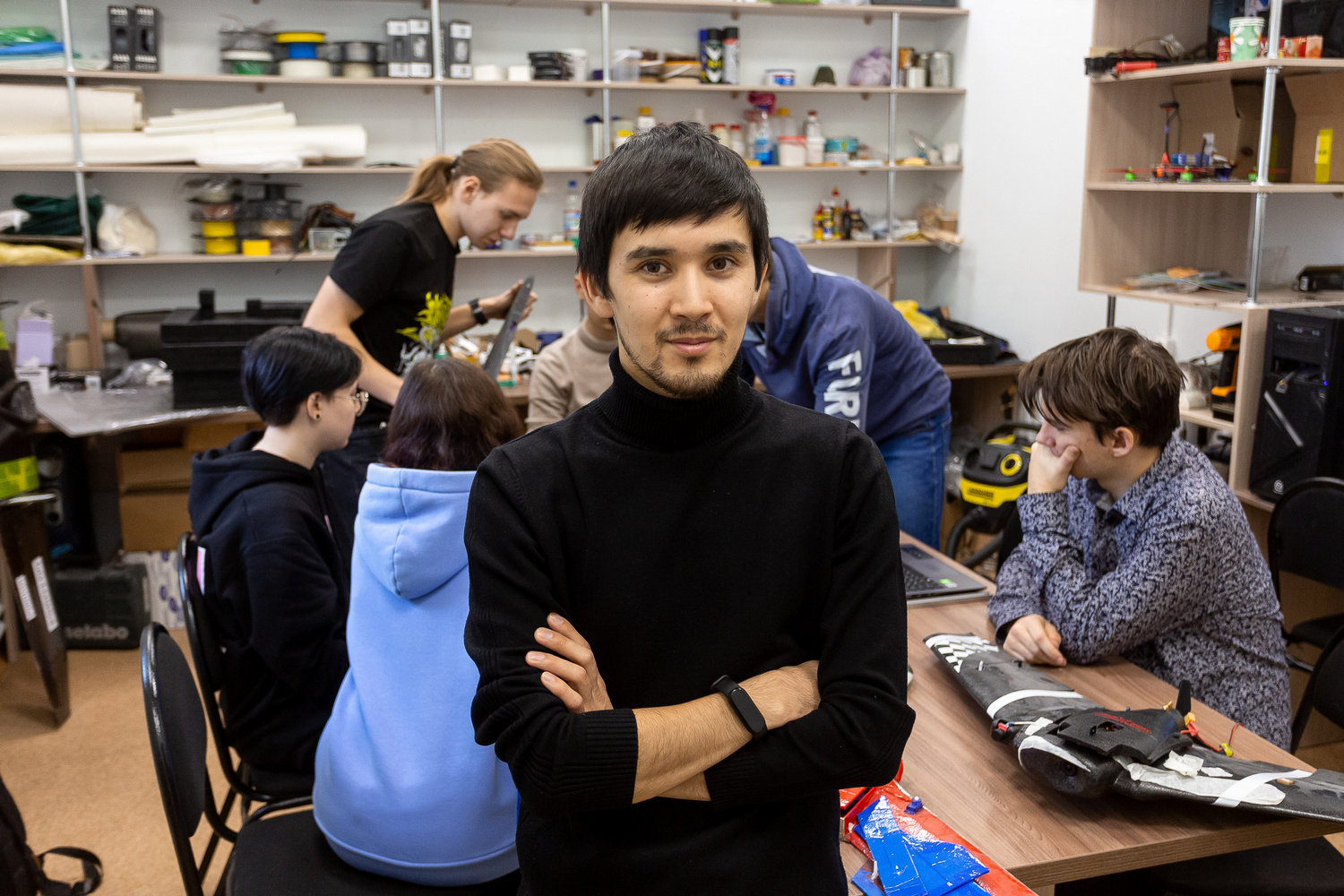Early-career scientists at the Faculty of Physics and Engineering are developing a drone that will help restore forests after fires. The UAV will deliver seeds with a special substrate to problem areas and will be able to seed several hectares in one flight. The project is part of the federal Priority 2030 program.
Forest fires that raged in Siberia in 2019–2020 prompted the project team to create an unmanned aerial vehicle. At the first stage, the design team developed a monitoring drone that could identify the most likely areas of fire outbreak. Then they moved on to the next stage — developing a UAV to restore burned forests.
However, the damaged areas can be difficult to access, and multirotor drones will not be able to fly there. Taking this into account, the designers created an airplane-type UAV with a wingspan of 4.32 meters and a weight of 29 kg. It will hold 1,000 seeds with a special substrate to help future trees to germinate. The drone can plant several hectares in an hour.

Kuat Ismailov noted that most of the development team are graduates and employees of the TSU Faculty of Physics and Engineering, who were engaged in aircraft ballistics and dynamics, so there were no difficulties in calculating the trajectory of the seed capsules reaching the ground.
“We tested the hypotheses and studied the mass and composition of bio-capsules during our research. As a result, we can firmly assert: yes, it is possible to use an airplane-type drone for such purposes, but it is extremely important to determine the reset mechanism, the manufacturing technology for the capsule, assess the soil damage from the sky, and properly choose the necessary UAV landing point,” Kuat added. “We have worked out an algorithm that will make aeroseeding effective. First, it is necessary to send a drone that will take three-dimensional images of the damaged area, mark the points of safe landing, and then send an aeroseeding UAV.”
Tomsk State University is doing great work in digital agriculture. The university is developing algorithms for monitoring and forecasting crop yields using a cloud service and implementing educational programs for staff training and project support for developing digital technologies for precision agriculture.